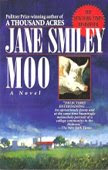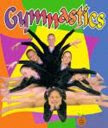A Novel of American Dreaming
by Alan Cheuse
To Catch the Lightning is a fictional account chronicling the lifework of photographer Edward Curtis: documenting all the Native American tribes. It lays out his inspiration, his dreams, and the staggering scope of his aspiration. Although Curtis\’ work took him all across the American continent and into Alaska, many of the scenes take place in Seattle (my hometown) or in major East Coast cities (near where I now live). I felt some affinity with the places the author described, and loved reading in the opening pages of a climb up Mount Rainier (whose profile was constantly visible on the horizon of my childhood). But I was thrown off by the frequent use of the word \”Seattlean\” at the beginning of the book. If I remember correctly, we always referred to ourselves as \”Seattlites.\” Maybe natives of Seattle called themselves differently in the 1890\’s? I don\’t know. It irked me.
I was eager to read this book, since my father\’s home has several books graced with Edward Curtis\’ photographs. I wanted to read more about things like the equipment he used, how he approached the natives, their reactions to him, the details he learned of the various tribal cultures… There\’s very little of that. Instead, Cheuse gives the reader a behind-the-scenes story of the work and how it affected the personal lives of those involved- especially Curtis\’ constant struggle to secure funds, and the strain his incessant travels put on his family. And all the dreams, desires, goals and yearnings of Curtis and Jimmy Fly-Wing, a native who assisted him for many years. Strangely, the presence of William Myers, Curtis\’ main assistant is very marginal, in spite of the fact that the bulk of the story is narrated from his point of view. (Alternating chapters about Jimmy Fly-Wing are also in first-person, and the voice of Curtis\’ wife interjects from time to time via letters and journal entries). In fact, the parts narrated by Myers tell omnisciently of Curtis- his actions in scenes where Myers is absent, his inner thoughts and feelings. I kept forgetting Myers was even a character in the story, much less its narrator, until sudden I\’d stumble across an \”I said…\” and stop: wait, who\’s this? This confusion of voices put me off balance and distracted me through the entire book.
Two of my favorite parts were reading of Curtis\’ visit to the Havasupai tribe at the bottom of the Grand Canyon- I read about them earlier in People of the Blue Water. And a sudden insight Myers had about the significance of rattlesnakes in a rain dance ceremony when they were filming it- that scene was fascinating. I also liked the parts about Jimmy Fly-Wing before he encountered white men, especially his world view and spiritual communion with animals. His converstaions with insects brought to mind a certain scene from Lord of the Flies…
This is the third book I have received from Sourcebooks. I wanted to like it so much more than I did. It was interesting and curious- and strange. I said that once while reading: \”this is such a strange book\” and my husband looked at me and replied: \”you read a lot of strange books.\” Well, yeah.
Rating: 3/5 502 pages, 2008
Read more reviews at:
Bookfoolery and Babble











